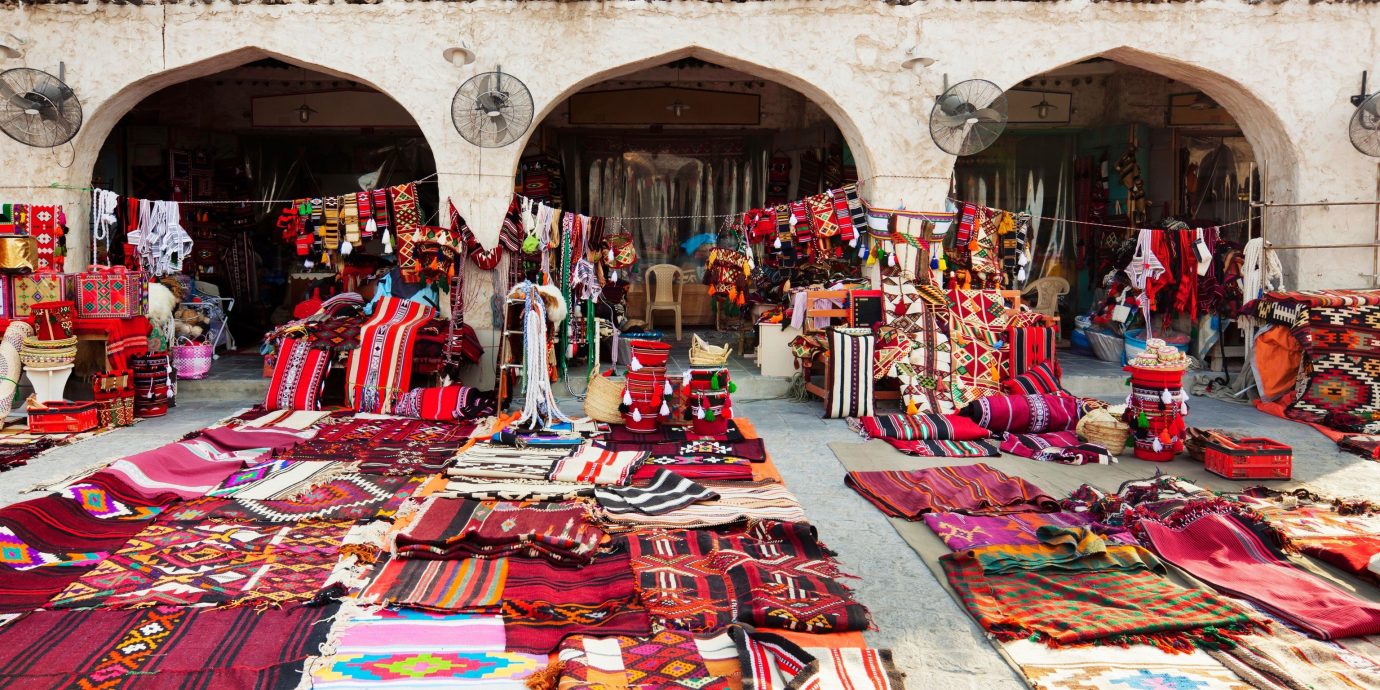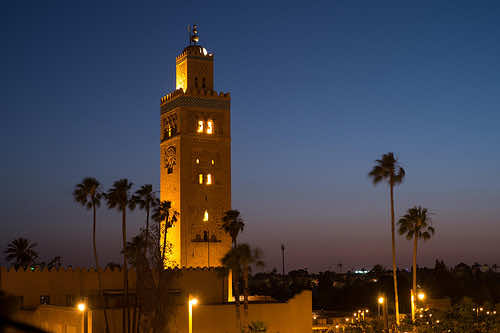Only one day to dive into the souks before we headed South.........




 .,
.,

Well o.k. there would be another day on our way back but still, no time to waste.
The hotel provided a perfectly adequate breakfast on the roof terrace but we skipped it to follow the rat-run lanes out of the medina to our affectionately remembered little breakfast place just off the Djemma..........I had been hoping and hoping that it was still there, still unchanged......and it was! Even the same guys, a little older but still churning out delicious milkshakes from fresh, fresh fruit and my favourite almonds, perfect pan chocolat, the most crunchy, nutty freshly baked rye bread, yogurts all lined up in their glasses, chilled freshly squeezed orange juice, pancakes with honey, an array of jewel like little cakes and of course the creamy cafe au lait ........oh bliss. Any combination of this superb breakfast food would probably be about 35 dh....€3.20 for two.
We followed our tradition of ordering a few extra pan chocolat and offering them to any passing bag lady on her morning begging route. The bag ladies of Marrakech are extra baggy and it's good to see that they are still perfectly acceptable in this café. They sit down quite contentedly with a café creme and their newly acquired pan chocolat, maybe share it with an ancient djellabad old guy with the most incredible pebble lenses glasses or a scrawny kid. There they sit in a tatty synthetic silk djellaba over several layers including woolly leggings down to ankles, hennaed toenails sticking out of decrepit plastic sandals. A new trend this time seems to be the baseball cap perched jauntily on top of the djellaba hood, very fetching.
O.K. , it's about 10 a.m. now, a bit early for the souks but never mind, time to find our bearings.

We enter the souks through the part where the olive stalls are, I love this bit, there are several stalls all selling identical olives. They are arranged in mounds in front of the stall, every colour and variety ; firm shiny pale green, through to the more mature murkier green, palest lilac into purple and finally the black salt dried wrinkly ones. Some are marinaded in a spicy mixture, others in a milder herby mix. Behind the mounds are the shelves and shelves of bottled olives looking fabulous in their shiny glass jars, not just poured in but arranged in layers with slivers of garlic, herbs or spices suspended in olive oil. Here too are the jars of preserved lemons looking sharp and fresh all ready for giving an extra special taste to the tagine. Harissa paste comes in different levels of heat, all a gorgeous rich chilli red. Amongst all this splendour is the stall owner wedged in amongst his wares offering the ladle to try a taste of the different varieties. Just around the corner from the olive stalls are the basket sellers where woven straw mats embroidered with red wool are also available, very striking and last forever.
We wandered around aimlessly for about an hour, Manfred's souk threshold. He went off to the Cafe des Epices (75 Rahba Lakdima Souk des Epices Marrakech ) in the spice souk, a good place to rendezvous.
I continued but was somewhat disappointed, no new exciting inventions since our last visit 4 years ago...........this was unusual, every time we have visited Marrakech there have been new innovations........I suspect commissioned by designers and then copied relentlessly, could it be that the designers have moved on to larger profit margins, China maybe?
Still very beautiful tribal rugs and the babuche are always tempting, I only bought 3 pairs this time for around 100dh, €10 each, fantastic value as they are made of beautiful soft leather including the sole and all hand stitched in the most gorgeous colour combinations.
It seemed that more stalls were selling identical merchandise and all on the tacky side, something to do with pleasing the masses of new tourists in the easiest and cheapest manner? I found my way back to the spice souk to meet Manfred and a very appreciated mint tea, he was looking quite smug clutching a little parcel which he pushed over to me, my birthday present, oh yes, forgot to say it was my birthday and this is what was in the parcel....
A STUPENDOUS BERBER BIRTHDAY NECKLACE

An extraordinary creation with nil intrinsic value but enormous ethnic value. This necklace is of recent manufacture but made up of base metal rings, the junk jewelery of the Berber souks for the last few decades and, more fascinating, dozens of bakerlite rings which were fashioned out of imported combs in the 20s and 30s. The Berbers were always consummate re-cyclers from need but see what a little imagination can produce......... the colour variations in the rings is wonderful, from deep ruby through terracotta, amber and an indefinite lilacy beige, in combination with the "silver" it's sensational..........I love my necklace, thank you Manfred!
For more information on ethnic Berber jewelery in Morocco see the beautiful book by Angela Fisher,

AFRICA ADORNED Publisher: Harry N. Abrams (September 30, 1984)
ISBN-10: 0810918234
ISBN-13: 978-0810918238
What a happy ending to my morning in the souks, after the mint tea at Cafe des Epices it was
time for a snack at our old favourite Cafè Toubkal in the Djemma and then back to our nice cool room at the Tresor for a siesta, we are following our Spanish routine which works perfectly here, pretend one is only going to rest and read and then gently drop off into a blissful snooze until the worst heat is over and one can look forward to what ever the evening may bring.........












.JPG)
.JPG)
.JPG)

.JPG)





.JPG)

.JPG)













.JPG)
.JPG)




















.JPG)


